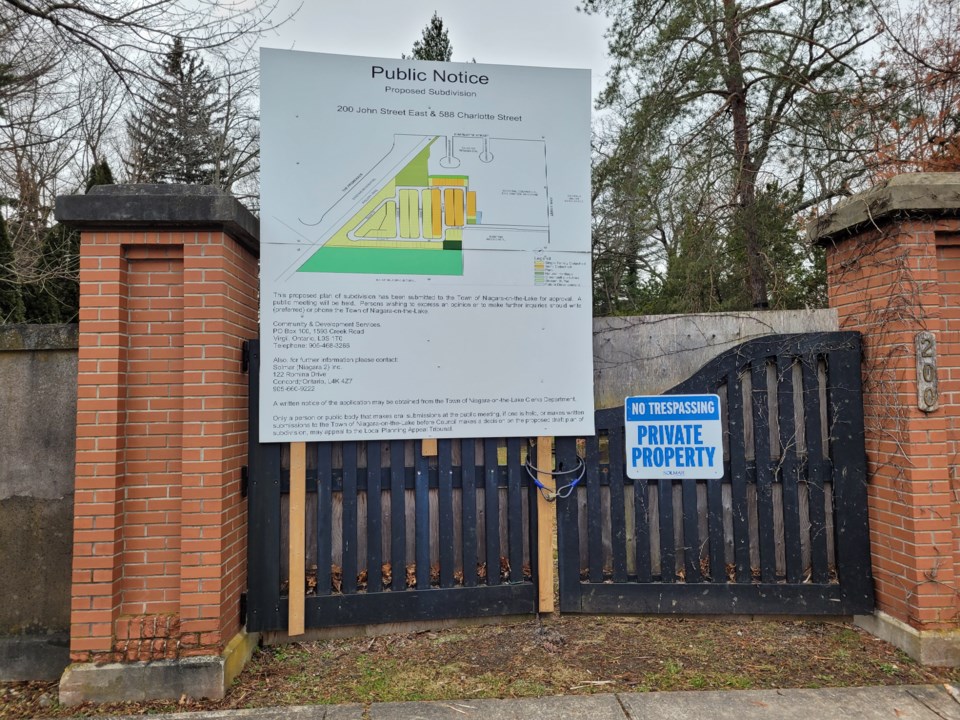An arborist called to testify on Friday, the fourth day of an Ontario Land Tribunal hearing over the proposed Rand Estates subdivision, says he and tree experts retained by opposing parties agree with each other on an important and necessary step before the project can move forward.
A tree management plan, a condition of draft plan approval, must be completed, said Bill Buchanan, an arborist serving as a witness for Solmar Development, the builder that has filed a number of appeals related to the development in Niagara-on-the-Lake on property historically known as the Rand Estate. “This is an enormous undertaking,” he said about the tree plan, especially that currently design approvals for the project have yet to be provided.
A statement of facts about tree protection was given as evidence Friday during the virtual hearing, endorsed by arborists representing all involved parties.
There are many trees in various states of health, and there are two on private property adjacent to the property to be developed.
They are Kentucky coffee trees and are considered a species at risk elsewhere in Ontario, but not in Niagara, according to Buchanan. “This was a concern for everybody,” he said.
These trees, along with others on boundaries of the proposed development, will need to be assessed further when a tree management plan gets underway, he said. The coffee trees are not naturally occurring, and were planted there, he said.
Taking questions after his presentation, Buchanan was asked by Sara Premi, co-legal counsel for Solmar, about whether there are any endangered species on the subject lands, to which he said there are not.
Tribunal member Daniel Best asked Buchanan why he believes the coffee trees are not considered endangered in Niagara. It's a “double whammy” in that they are not governed under the endangered species act locally, Buchanan said, and that the trees were “culturally” planted. “It does not count, essentially.”
These questions were raised before Buchanan was cross-examined by David Neligan, lawyer for Blair and Brenda McArthur, as well as by Nancy Smith, the town’s legal representative, and Catherine Lyons on behalf of Save Our Rand Estate (SORE), with the discussion continuing about the need for a tree management plan.
Eleni Girma Beyene, an engineer, as well as planner Leah Wallace are two Solmar witnesses that were scheduled to participate Friday – but did not due to Buchanan being cross-examined past 4:30 p.m., the daily time of adjournment.
Taking place since Tuesday, the hearing has run about six and a half hours each day, including breaks taken by participants.
It will resume Monday at 10 a.m. and can be viewed on the OLT’s YouTube channel.
The hearing is expected to occur over the course of 29 days.
